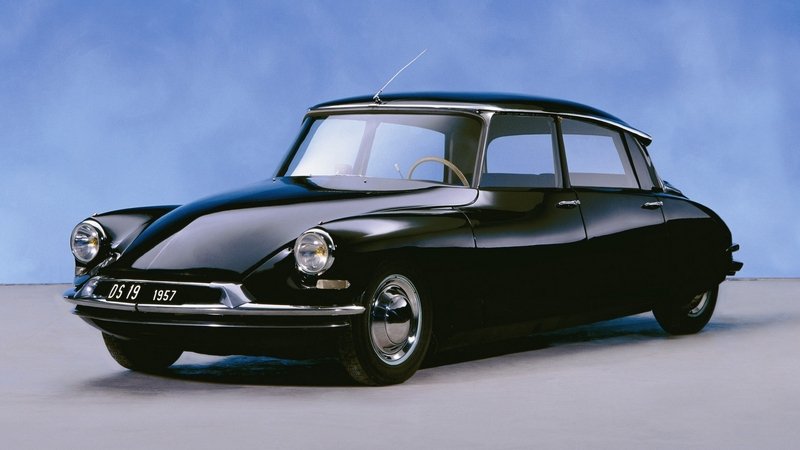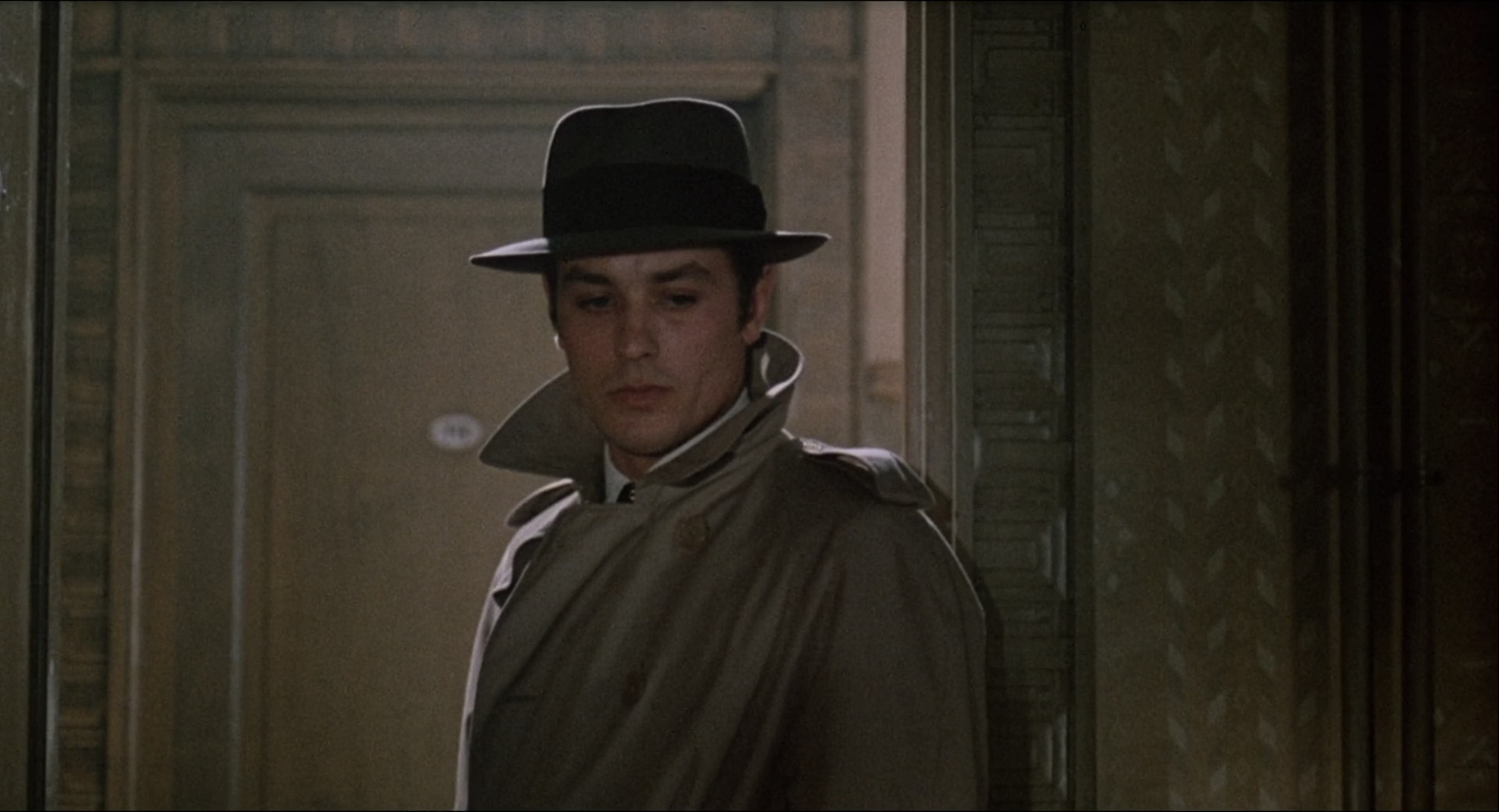In 1957, Roland Barthes published Mythologies, an essay and a set of vignettes that explored the mechanics of social “myths” and the role of mythology in modern life. In one vignette, he writes about “The new Citroën”. The particular make of Citroën he writes about is the then-newly introduced D.S.[1], a futuristic executive car with a spectacularly aerodynamic body and an attention toward refining qualities of driving like ride smoothness, braking, and handling[2].
It is obvious that the new Citroën has fallen from the sky inasmuch as it appears at first sight as a superlative object .. We must not forget that an object is the best messenger of a world above that of nature: one can easily see in an object at once a perfection and an absence of origin, a closure and a brilliance, a transformation of life into matter (matter is much more magical than life), and in a word a silence which belongs to the realm of fairy-tales. The D.S. has all the features (or at least the public is unanimous in attributing them to it at first sight) of one of those objects from another universe which have supplied fuel for the neomania of the eighteenth century and that of our own science-fiction: the Déesse is first and foremost a new Nautilus.

Barthes argues that the significance of the D.S. lies almost entirely in its image, in its mythology, i.e. not what it is, but what has been conferred onto it in popular culture.
The title of Jean-Pierre Melville’s film, Le Samouraï suggests that it too, will be a story about a character whose significance derives from a mythology, the code of the samurai; a way of life which is entirely symbolic, a reality which only exists so long as a mass social conspiracy or deluded personal mania is there to support it. The Bushido code of the samurai has its closest western analogue in the European notion of chivalry, and chivalry has its canonical characterization in Don Quixote – a person who lives primarily through principle, someone who lives completely and vigorously for a fabricated ideal. It’s appropriate that Jef Costello in Le Samouraï beholds a keyring which allows him to drive any Citroën D.S. Like Don Quixote’s white steed, the reputation of the D.S. precedes it; the mythology of driver and vehicle are inextricably tied in the fictional.
Of course my conferrence of the symbolism embedded into this film could be imaginary, but at the same time, I suspect that a director who had his legal name changed in order to pay homage to the novelist who wrote Moby Dick is also a director who might have a profound preference for symbolism in the art of fiction.
If you stay with me, the next question becomes, why? Is there a thesis embedded in this story? And if not a thesis, then maybe just a suggestion, a question or morality to which the symbolism gestures toward? A good place to start with that question is to consider the genre to which this film pays tribute, and the significance of that genre – namely the genre of film noir.
As Kortina and I have previously argued, film noir is itself an attempt to mythologize the individual’s place in the modern world.
When we think of noir, what first comes to mind might be an aesthetic – hard shadows and silhouettes, the private investigator and the femme fatale …
But we might also understand noir as a body of folklore that emerged from a set of unprecedented historical circumstances: the great depression, two world wars, the birth of mass industrialization, and profound scientific discoveries that deeply undermined human significance, like evolution, relativity, and understanding of the depth of the cosmos.
All together, these circumstances evoked a distinctly modern type of sociological despair, characterized by a sense of disorientation, pessimism, and meaninglessness. Film noir had cultural significance not because of its striking visual style, but because it attempted to explore these modern problems through storytelling.
The mythologizing is necessary because there is simultaneously an incomprehensibility to the modern world, and a deep personal need for understanding one’s place in that world. The timeliness of the noir tradition was not accidental; Hannah Arendt, writing around the same time in the 20th century reasoned that Hegel’s concept of “reconciling thought with reality” was finally broken, that in the complexity of modern life, such a reconciliation is finally an impossibility, that the old confidence where either God or Science could eventually harmonize thought with reality was mistaken, and further, that our modern predicament calls for a kind of thought without hope for bridging confusion with knowledge. Her own thinking eventually depends heavily on parable, particularly from Kafka. Like Barthes with the D.S., Arendt argues that the Platonic notion of reality has been superseded by more fickle mental constructs. Noir as a genre emerged around the beginning of the 20th century as a narrative or cognitive means to grapple with the circumstance of life in an inherently illegible social world.
The task of the mind is to understand what happened, and this understanding, according to Hegel, is man’s way of reconciling himself with reality; its actual end is to be at peace with the world. The trouble is that if the mind is unable to bring peace and to induce reconciliation, it finds itself immediately engaged in its own kind of warfare.

Le Samouraï is, in one way, a cinematic rendering of thought, presumably the kind of thought that Arendt describes. The movie carries dialog only where necessary, especially when it comes to Costello’s character. The audience, through so many close-ups of his stoic mein, gathers only that Costello is calculating, thinking, speculating; the contents of those thoughts are never made explicit, only suggested at through his actions or interactions.
For Arendt, only thought itself is a means to any chance at freedom in the modern world. Thought, as she puts it is what creates a “gap between past and future where freedom can appear”. Meditation, or personal myth-making, is the only means to create within life a space where action can be taken in freedom. This, it seems, is what Costello from his squalid Parisian apartment seeks; it is what the Samurai seeks, and what Don Quixote sought: an opportunity to exercise freedom through a reality made from a mythology self-imposed. Costello’s death in the end makes this evident. It is a symbolic death, an empty gun, a theatrical presentation of a rhetorical question, a service to some imagined ritual, removed from reason, serving something totally illusory, yet totally, fatally, meaningful.
…
[1] The naming of the D.S. in French is meant to be a pun on the word Déesse, meaning “goddess”
[2] The D.S. was the first mass produced automobile that featured hydropneumatic suspension and disc brakes.
He has two antagonists: the first presses him from behind, from the origin. The second blocks the road ahead. He gives battle to both. To be sure, the first supports him in his fight with the second, for he wants to push him forward, and in the same way the second supports him in his fight with the first, since he drives him back. But it is only theoretically so. For it is not only the two antagonists who are there, but he himself as well, and who really knows his intentions? His dream, though, is that some time in an unguarded moment and this would require a night darker than any night has ever been yet he will jump out of the fighting line and be promoted, on account of his experience in fighting, to the position of umpire over his antagonists in their fight with each other.